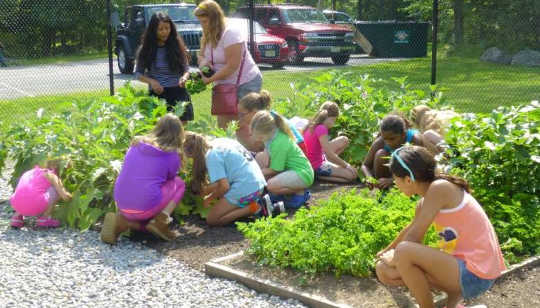
Girl Scouts can help parents make energy-saving decisions at home, research shows.
A team of researchers recently measured the effects of a youth energy-behavior program on the Girl Scout participants and their families. The results, published today in Nature Energy, show that educating the girls about energy-saving behaviors led to positive changes in both the girls and their households.
The participants belonged to 30 Girl Scout troops from the Northern California council. Each of the troops took part in Girls Learning Environment and Energy (GLEE), a five-part program that focuses educating the girls on energy use through either a home-energy or a food-and-transportation lens.
The girls and their parents answered questionnaires about their electricity, food, and transportation energy use before the program, immediately after the program and eight months after the program to test the maintenance of changed behaviors.
The study showed that energy-saving educational programs changed behavior positively, says Nicole Ardoin, an associate professor at Stanford University Graduate School of Education and a senior fellow at the Stanford Woods Institute for the Environment.
Based on the behavioral changes seen in the Girl Scouts, the researchers calculated conservative estimates of 3 to 5 percent savings in average annual electricity use by households and an additional 1 to 3 percent savings in gas usage. When magnified over a country’s total population, these child-led differences can represent large energy savings for communities.
Though only the children participated in the program, the effects of their increased understanding and interest in environmental actions, as well as their newly honed skills related to energy conservation, positively affected the actions of their parents, too.
“We found that engaging people in reconsidering their energy use is a family affair. Fourth- and fifth-grade Girl Scouts shared their newfound interest, enthusiasm, knowledge, and skills with their families. In turn, that information and interest diffused to parents,” Ardoin says.
“Parents supported their girls’ learning by making changes together with their girls, and parents helped the girls make changes that the children couldn’t make on their own,” she says.
The researchers say that programs like the Girl Scouts have the potential to reach beyond a single household as the girls spread their new knowledge and behaviors to friends, schools, and extended communities.
Involving younger generations in environmental action will be crucial in making progress on these types of issues, said Thomas Robinson, the Irving Schulman, professor in child health at Stanford School of Medicine.
“Children are the group whose futures are most impacted by environmental changes,” says Robinson. “If they adopt sustainable lifestyles now, they are the group who will live long lives of sustainable practice. We are currently scaling up this program with Girl Scout troops throughout the country, reaching Girl Scouts and families nationwide.”
Source: Rosemary Mena-Werth for Stanford University
Related Books
at InnerSelf Market and Amazon





























